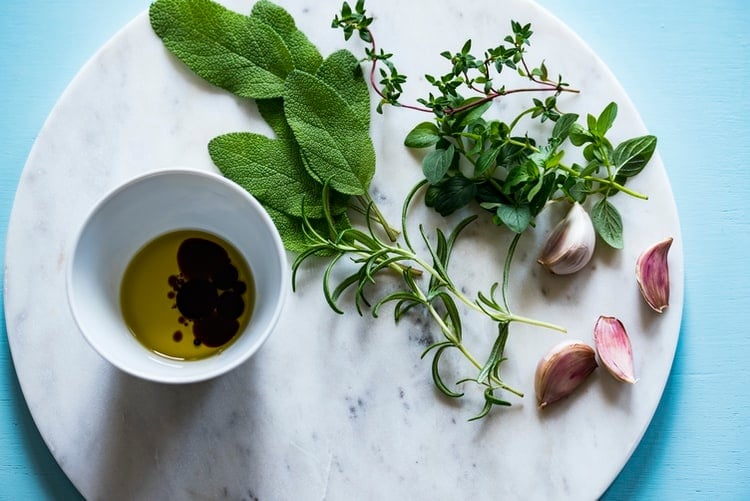Salvia officinalis L. (sage) is a vital industrial plant that has been utilized in both food and pharmaceutical medications. While we know that sage confers therapeutic effects (such as acting as an antioxidant), less is known about how the terpene profile promotes its biological activity. One of the terpenoids that has caught considerable attention is thujone. [1]
Currently, there’s discussion as to how toxic this molecule is for consumption. European regulations no longer restrict the limits of thujone in sage and other thujone-containing flavoring plants. [2] Yet, the European Medicines Agency (EMA) has concluded that a person should not be exposed to more than 6.0 mg of thujone per day due to potentially neurotoxic effects.
The discussion of thujone’s true toxicity in individuals will continue until more scientific research is conducted. However, at this time, it’s believed that metered medicinal use of thujone-containing plants poses little risk.
One aspect of sage extracts that scientists have noted is that thujone composition changes depending on “the quality of the plant material as well as the methods used for extraction.” [1] For this reason, it’s in the best interest of many to determine the optimal extraction and analysis method.
Researchers at the Università Degli Studi Di Torino (University of Turin) obtained and ground dried leaves of Salvia officinalis L. from the Pharmaceutical Laboratory Labofarm in Poland. From there, 4 g infusions of sage tea were prepared in 400 mL of boiling water. Once brewed, each sample was then filtered into a 20 mL vial and allowed to equilibrate for 2 hours at 45°C (113°F).
The samples were then subject to extraction using four different methods:
- Tenax TAⓇ purge and trap (Tenax-TA)
- Headspace (HS) solid-phase microextraction (SPME)
- HS sorptive extraction (HSSE)
- Stir bar sorptive extraction (SBSE)
Following desorption, terpenes were analyzed with gas chromatography-mass spectrometry (GC-MS) for alpha- and beta-thujone with respective linear retention indices (LRI) of 1,103 and 1,114. The data for the two terpenoids are summarized in the table below (mg/kg dry weight; standard deviations not included). The asterisk indicates a significant difference in its respective row.
| Compound | HSSE | Tenax-TA | SPME | SBME |
| α-Thujone | 18.45 | 12.65 | 26.95 | 17.90 |
| β-Thujone | 29.50* | 9.20 | 10.75 | 11.65 |
Table recreated by the author from data in reference [1]
Focusing on β-thujone, HSSE was the most capable extraction option. Still, HS-SPME resulted in more comprehensive terpene extraction, and the study reports that this technique is most likely better for industrial use as it’s more cost-effective and doesn’t require a thermal desorption unit. Thus, the researchers concluded that SPME offers the best extraction technique for α- and β-thujone. [1]
Photo by Joanna Kosinska on Unsplash
References
- Arcuesz A, et al. Comparison of different extraction methods for the determination of alpha- and beta-thujone in sage (Salvia officinalis L.) herbal tea. J Sep Sci. 2013;36(18):3130-4. Impact Factor: 2.516; Times Cited: 13
- Németh É, Thi Huong N. Thujone, a widely debated volatile compound: What do we know about it? Phytochem Rev. 2020. doi:10.1007/s11101-020-09671-y. Impact Factor: 4.298











